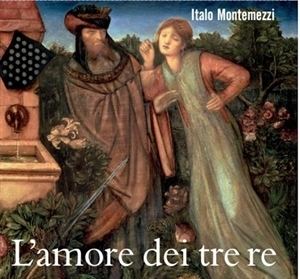Written 1913 Language Italian | First performance 10 April 1913 | |
 | ||
Similar La cena delle beffe, I gioielli della Madonna, Francesca da Rimini, Mefistofele, Il tabarro | ||
L'amore dei tre re ("The Love of the Three Kings") is an opera in three acts by Italo Montemezzi. Its Italian-language libretto was written by playwright Sem Benelli who based it on his play of the same title.
Contents
Performance history
The opera premiered at La Scala in Milan on April 10, 1913. It received mixed reviews, but quickly became an international success, especially in the United States, where it became a staple of the repertory for several decades. After the Second World War, the frequency of performances declined dramatically, and it wasn't performed in the US for nearly 30 years. It is still performed only rarely.
Synopsis
Time: The Dark AgesPlace: ItalyArchibaldo, the blind king, conquered the kingdom of Altura forty years before the opera begins. After forty years, the Alturan people openly object to the reign of the Germanic Archibaldo. Archibaldo recounts his memories of the thrill of conquest, and his reminiscence equates the invasion of Italy to the winning of a beautiful woman.
The story unfolds as we learn that Archibaldo's son Manfredo has been married to the native Alturan princess Fiora. But Fiora is having an affair with another Alturan prince, Avito. Although Archibaldo suspects Fiora of infidelity, he falls short of proof, since he is blind, and his own Alturan servants do not cooperate with him in uncovering the affair.
In the first two acts there are various scenarios played out with mounting intensity. There are two love duets between Avito and Fiora, and a scene in which Manfredo pours out his love for Fiora and begs her to show him affection. All of these are interspersed with scenes in which Archibaldo questions Fiora. Finally, enraged, Archibaldo strangles her at the end of the second act.
In the final act, Fiora's body is laid in a crypt, and the people of Altura mourn for her. Archibaldo has secretly poisoned Fiora's lips, so that her lover will die. Avito kisses Fiora's lips. As he dies from the poison, Avito reveals to Manfredo that he was Fiora's lover, and that Archibaldo has laid the poison. Stricken with grief at the loss of the woman he loved, Manfredo also kisses Fiora's lips. Finally, Archibaldo enters to see if his trap has caught Fiora's lover, and despairs as he hears the voice of his dying son.
Music
The music of the opera is lush and complex. Similar to works such as Debussy's Pelleas et Melisande, the orchestra frequently reveals the subtext of the interactions between the characters. Montemezzi himself held that Archibaldo is not only suspicious of Fiora, but also desires her himself. The orchestration, in surges of rich density, also marks how characters move into states of very deep passion. When the characters are moved into these states, the music has a very distinct, transcendent and dreamlike quality.
